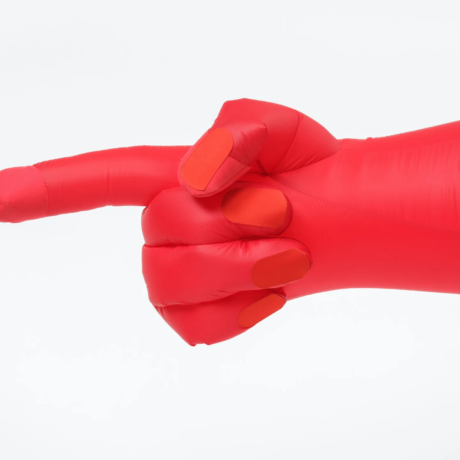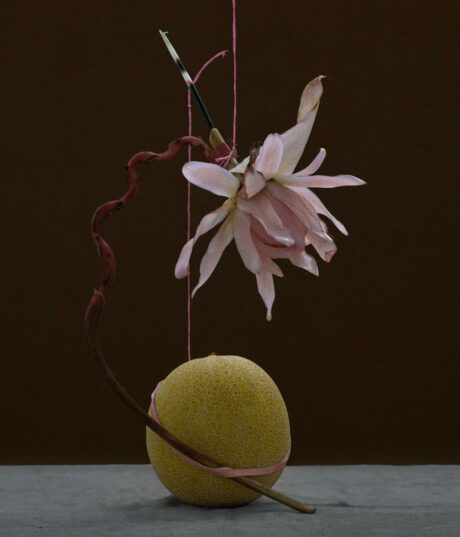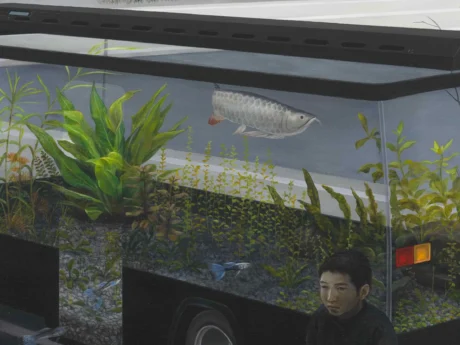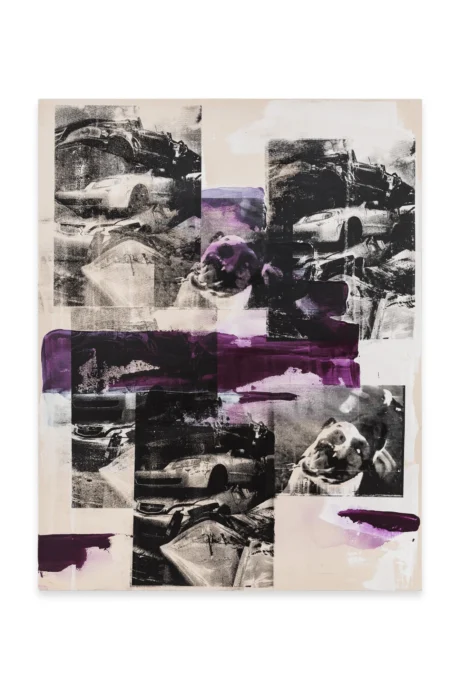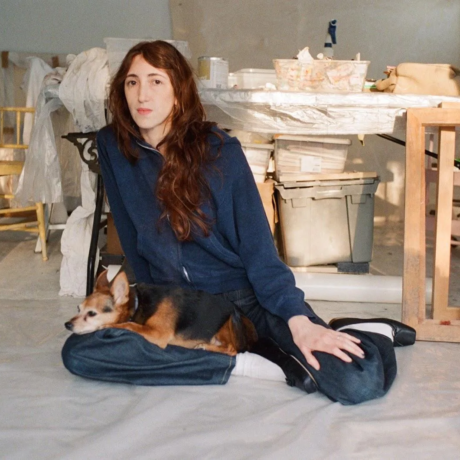Elephant writer Samaira Wilson speaks to Jacob Todd Broussard about his latest show at the Wolfgang Gallery in Atlanta and considers the plethora of historical references present in his paintings.
Jacob Todd Broussard, a Louisiana native with Cajun-French roots, is an assistant professor at Virginia Commonwealth University and holds an MFA in Painting from Yale School of Art.
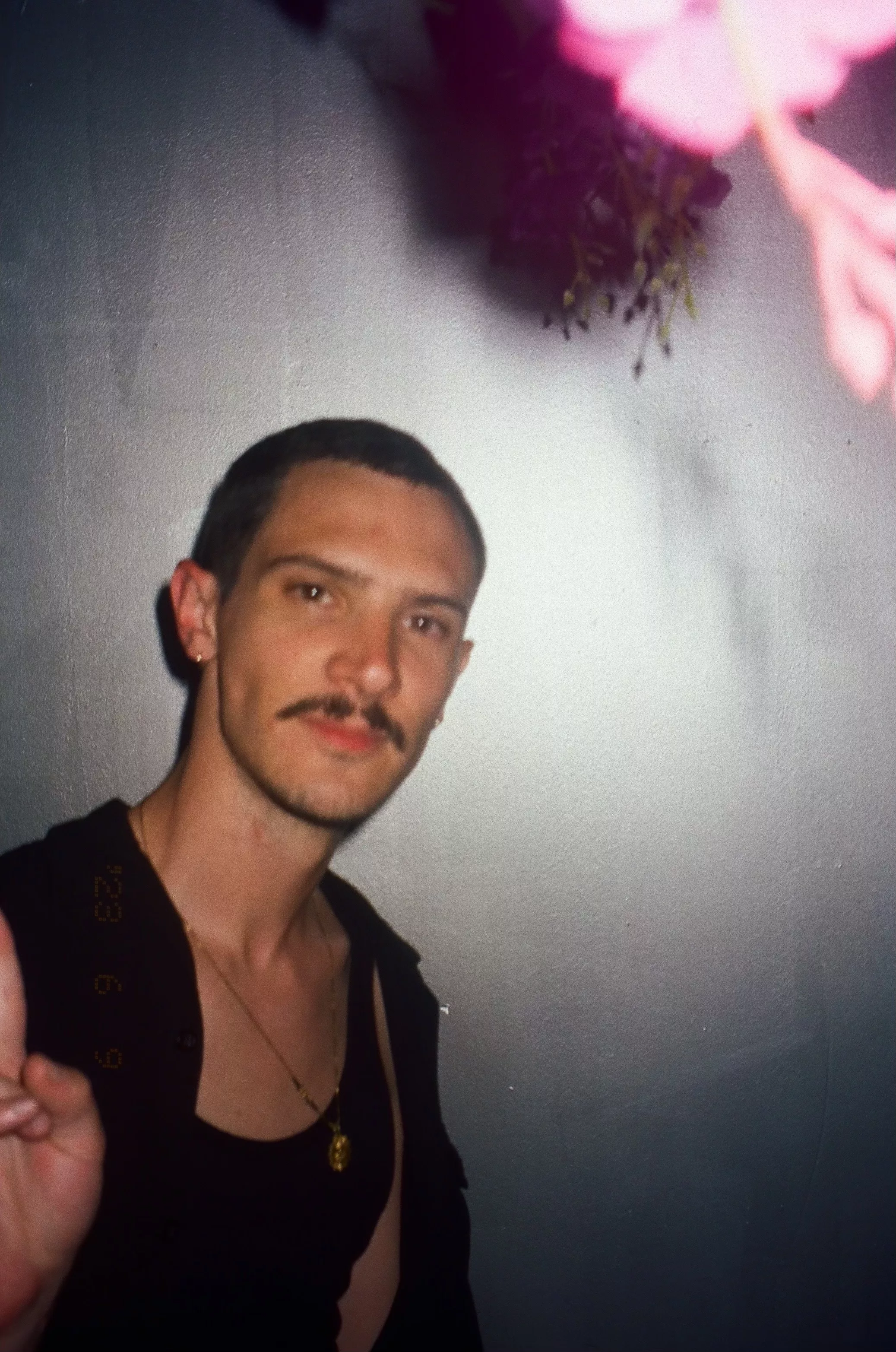
We met the morning after he opened The Deathbed Scene at Wolfgang Gallery on the Upper Westside of Atlanta. Sat slurping down espresso on the patio of The Daily Chew, we came to debrief, dissect, and divulge. Upon touchdown in the city, Broussard spent most of his time in Wolfgang’s white cube. Grabbing food and coffee when he could, he zeroed in on the last touches before opening night. His work ranges in size, so he needed to play in the gallery and rubix cube how everything would find order in the space.
Inspired by Justin Torres’ novel Blackouts, Broussard explained that bardic knowledge passed down from one person to another is emblematically represented on the deathbed. The show is titled as a nod to the plot device that appears as a space of disclosure before death. He relates this exchange of last words to the archive. Pressing his ear against it, he listens for the echoes of Forrest Bess, Gene Dominigue, and Naomi Sims.
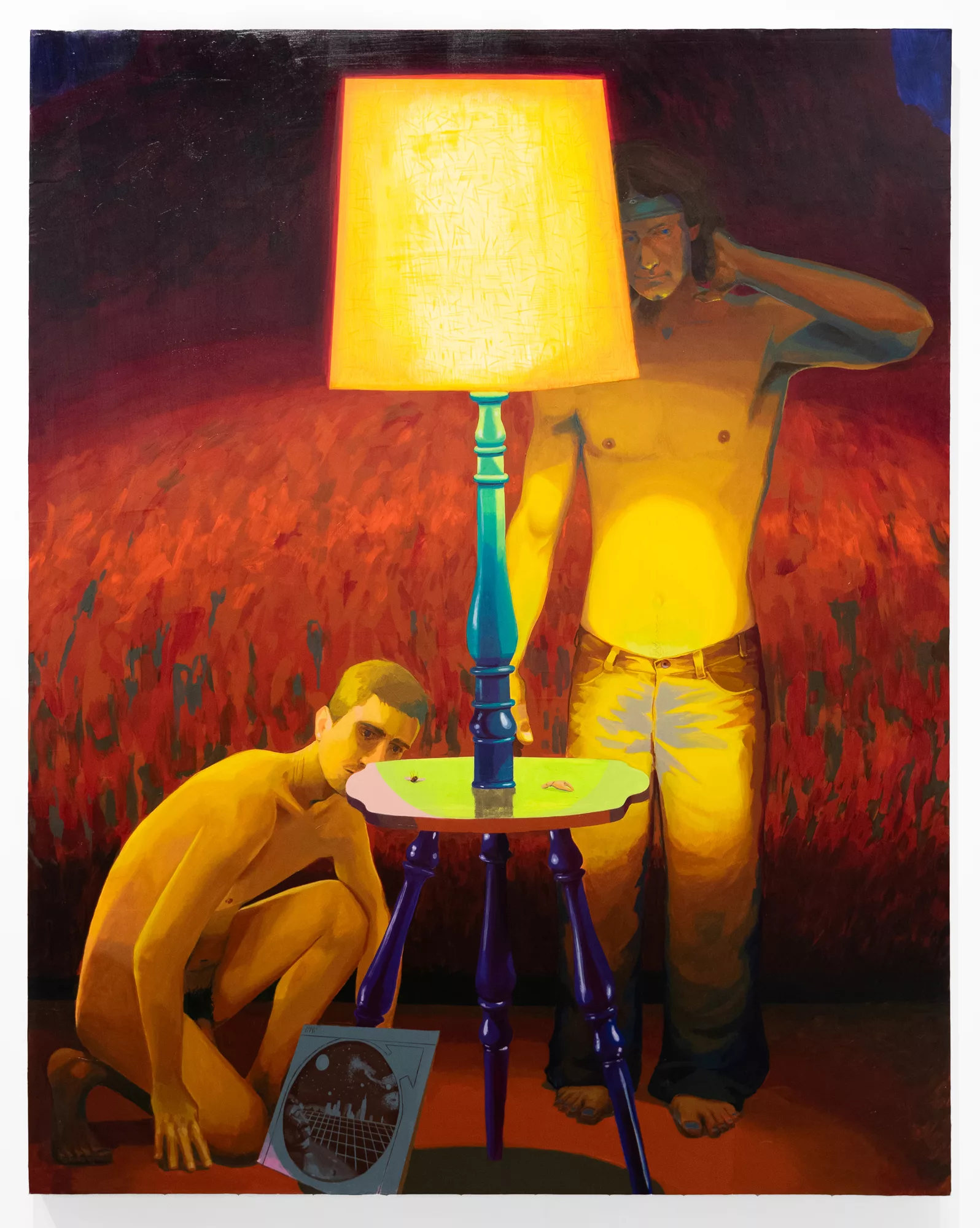
“I’m not a historian, I’m not an archivist, I’m an artist. So, what do you do with these fragments of a life? How do these modes of queerness on the coast or outside of a big city relate to a particular place?” He asks.
We exchanged our love stories with departed artists, and he expanded on how they have led him to his current perspective. He began with his 5-year deep dive into Forrest Bess, a queer Gulf Texan fisherman who doubled as a modernist painter. Spanning the 50s through the 70s, Bess lived and worked on a spit of land accessible by boat, selling fish bait. Reeking of mysticism, Bess created a language of symbols he found in his dreams and was a pen pal to Carl Jung. In studying what was left of him, all Broussard could ask was, “How do I artfully respond to this person?”
Broussard is familiar with this need for response. Last summer, he put on a show called Afters at Towards Gallery in Toronto, where he examined The Mystic Krewe of Apollo de Lafayette, a Mardi Gras group founded in New Orleans in 1969 to foster brotherhood, unity, and equality within the gay community. It was close to home, as he found out one of his distant cousins was a member. By way of Afters, Broussard reconciled with this space he felt between himself and Domingue. He constructed a repository of memories with fantasized scenarios from social gatherings, exploring a distinct and timeless space.
In The Deathbed Scene, he aims to connect the Bess and Domingue research with the well-known drag performer Naomi Sims. Sims, more renowned in Houston but hailing from Lafayette, was born Newman Braud. Two-time winner of the Miss Gay America title and known as the “eyes of Texas,” she left a legacy of fierce glamour. Although she passed away in 1992 due to complications from AIDS, her spirit lives on.
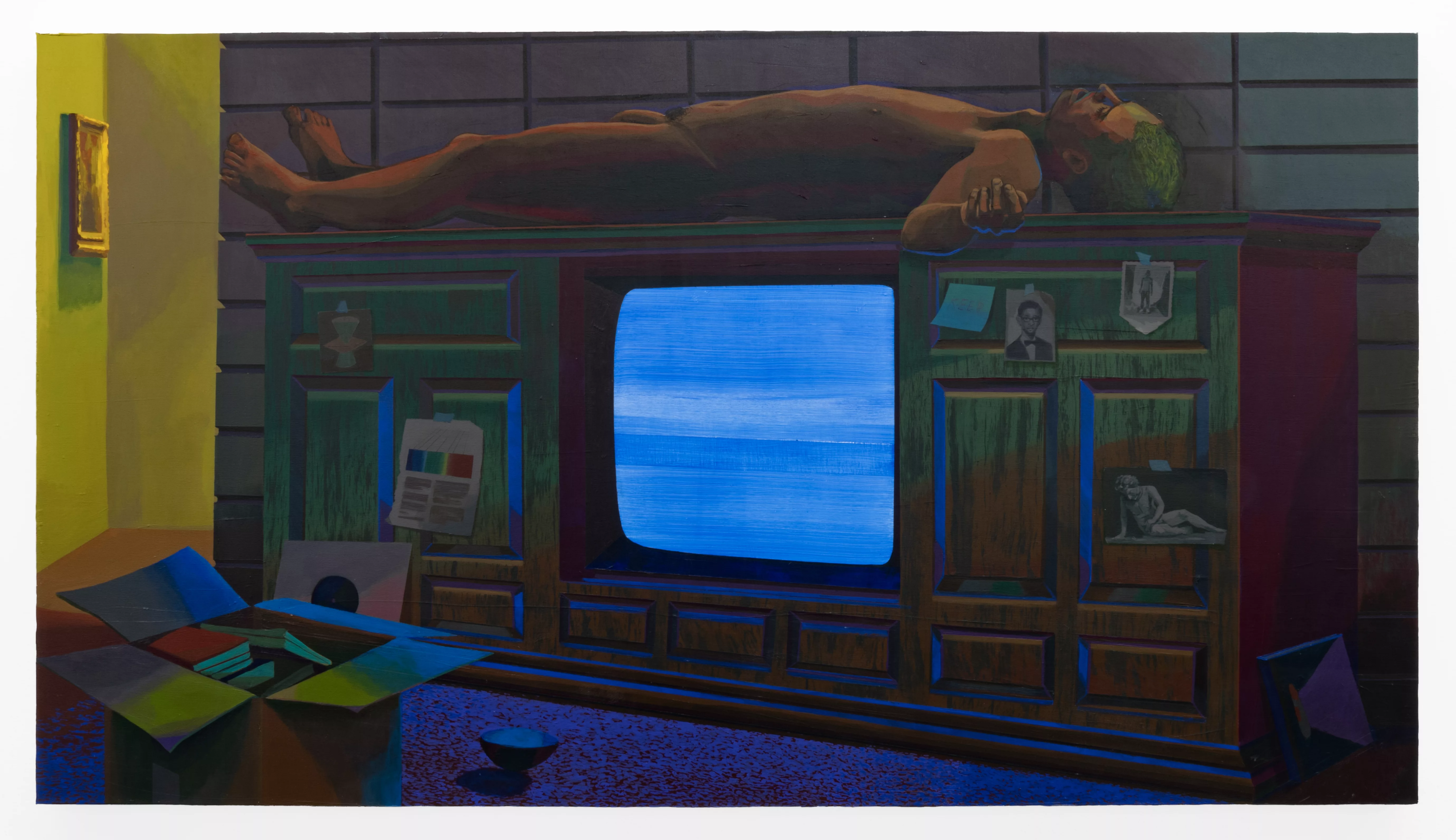
Seduced by the past but tethered to the present, Broussard picks through rubble and tries to make contact. This idea is most present in Did We Discuss Distance (The History of Touches), which features a dimly lit room with a naked body atop a mid-century modern entertainment system that has lost signal. It’s a bit tragic; the static cannot connect or receive and is helplessly stuck trying. Intentionally, the TV’s blue references Blue by Derek Jarman, the 1993 British experimental film directed by Jarman himself. Daring for the 90s, it was an 80-minute meditation on Yves Klein blue, combining music, sound effects, and Jarman’s narration about his life and vision-related struggles due to AIDS.
A post-it note stuck to the system says “keep,” and there’s a box full of belongings. So, someone definitely died, right? Is that guy dead? Is it a deathbed of sorts, like a pyre waiting to be lit? Broussard doesn’t confirm or deny anything. We only know that it’s mysterious, has peculiar lighting conditions, and a visual lure. The array of colors he uses is fascinating because he uses Flashe paint, resulting in super bright and visually intense colors in specific areas of each piece.
“I love it when a painting starts to take on its own logic and direct you on how it needs to be constructed. For me, color does that.”
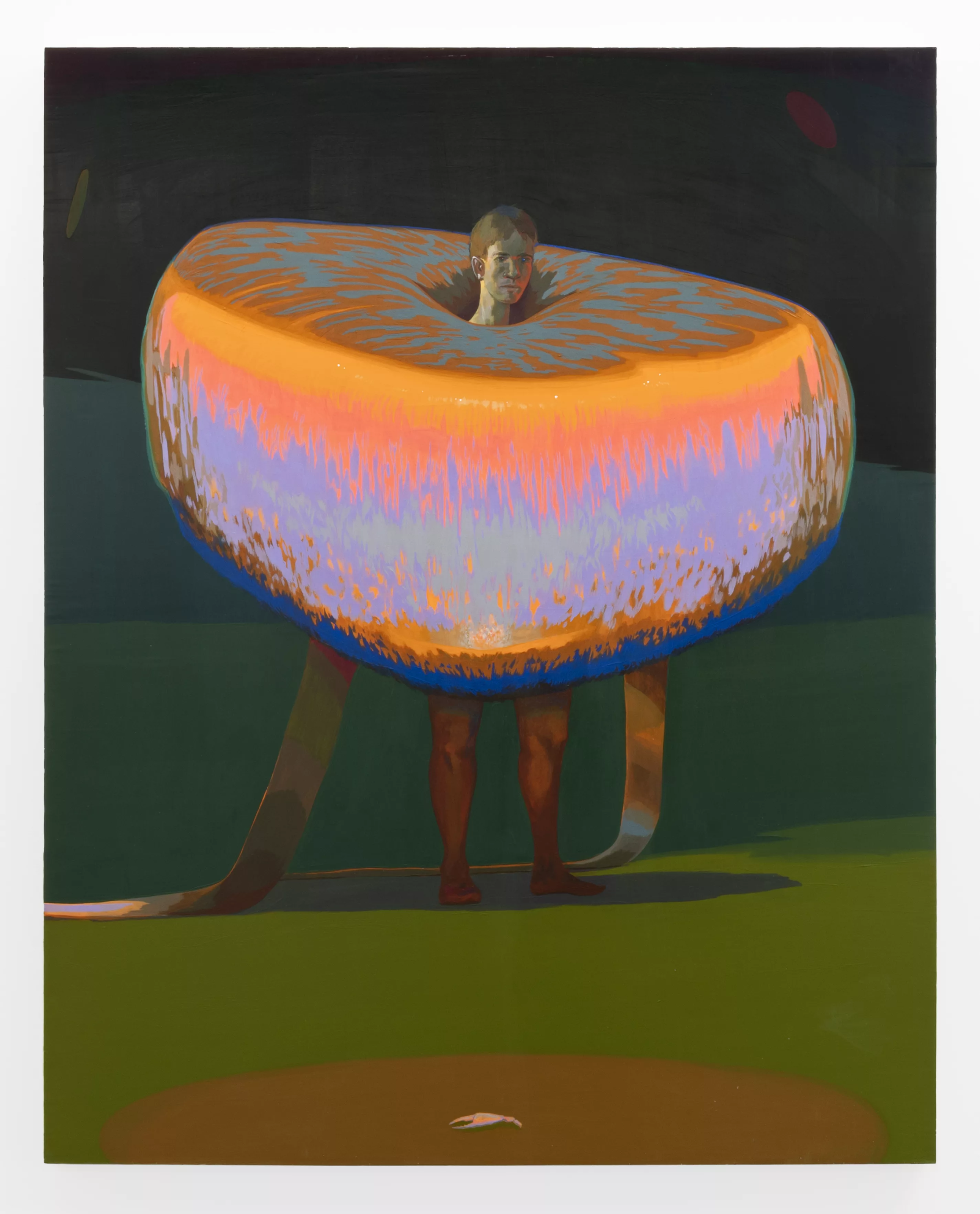
The figures in this show are lonely, stranded, and yearning. The paintings, in combination with the floor pieces, are intended to address the disconnect between the archive and the self, testing how elastic time can become. To help unriddle this relationship, he leaned on space-time relativity, specifically the light cone theory. The diagram used to present this phenomenon shows two cones forming an hourglass shape; one cone represents the past, the other represents the future, and the present moment is in the middle.
To understand this, think of stars. Sometimes, bright stars that burned out hundreds of years ago still shine, and we receive light from something no longer there. This is because, in space, we view time based on the speed at which light travels, also known as light years.
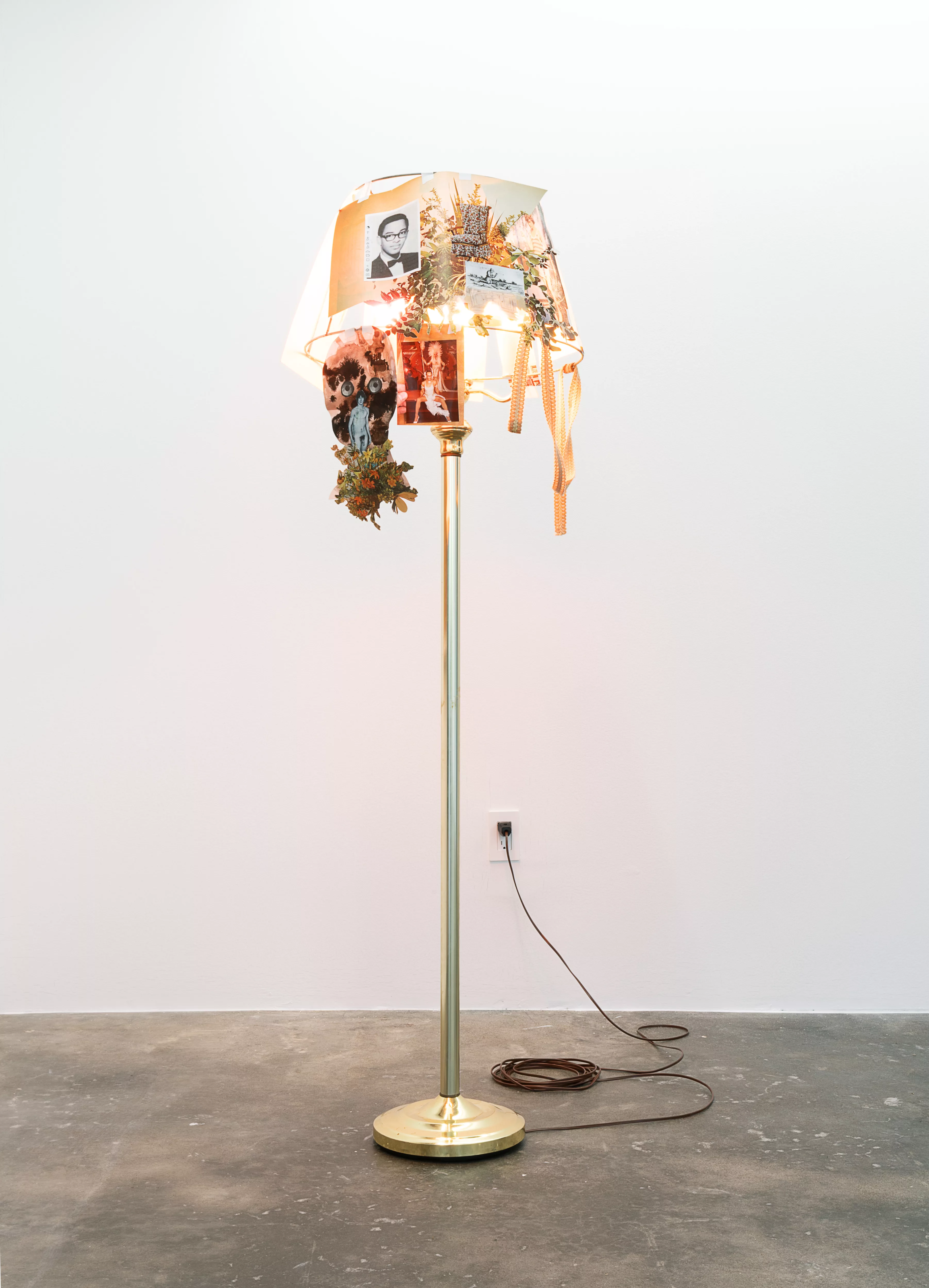
After sleuthing Facebook Marketplace for brass lamps to furnish his apartment, Broussard figured lamps were cones. Repurposed, they now cast light through the gallery, originating from a specific moment in time and traveling in all directions, equivalent to a star in space-time. On top of that, he collaged photos and documents from Sims’ archive so that her light shines at this moment post-death. Pushing this theory further, he questions, what if the light captured in a Bess painting traveled from 1962 to the present moment so that it could arrive to him? Could that same light reflect off a sparkle of Sims and Domingue?
Emile Mausner, a close friend and captivating writer, wrote the exhibition essay Past-Light Regression to elucidate the magic nestled in this show. The essay strings together the underlying influences and hidden messages, breaking them into their philosophical parts.
Mausner writes, “All that remains of an irrevocable past, even its most recent moment, are things produced in time. And twilight eventually falls on every idol. Indeed, the artist can be said to have a romantic persuasion, who makes sites of desire in the shadow of annihilation.”
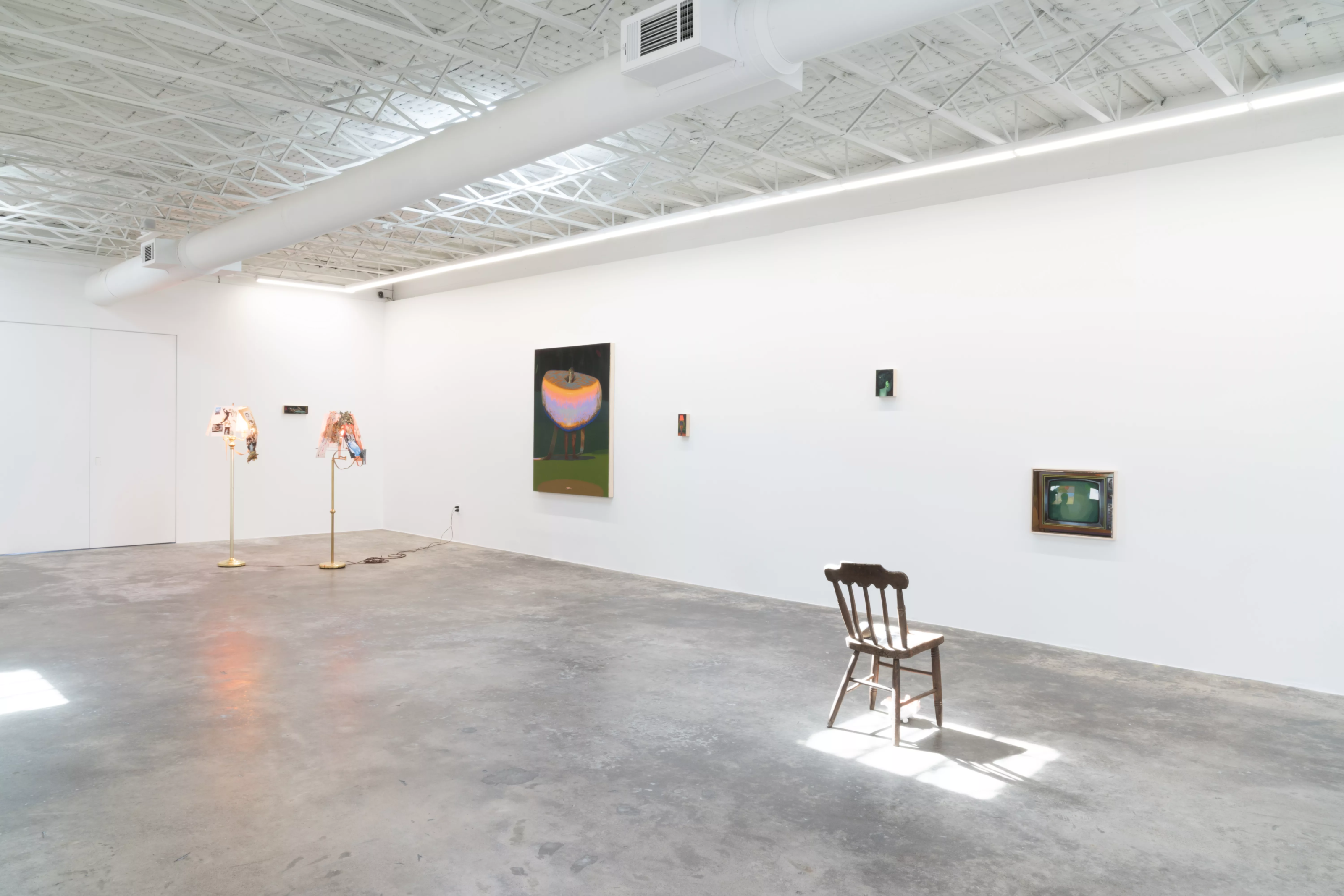
To close our cosmic tête-à-tête, I asked Broussard what metaphor best describes the show. He thought deeply and said softly, “…witnessing a spell being cast.” How clever. One needs bits and pieces of people to conduct a spell, like hair or something someone has touched. And in a way, by using ephemera and archival material, he collected the necessary items for the occasion.
The spell we witness in the gallery is a haunting call to investigate queerness in relation to splintered histories, longing, and isolation. Broussard presents an alternative resolution through painting, collage, theory, and integrating his origins into shared subcultural life. Holding his heroes close to his heart, he created an esoteric memorial tangled in existential reckoning to provoke transformation within the relationship between the self and time.
Words by Samaira Wilson
